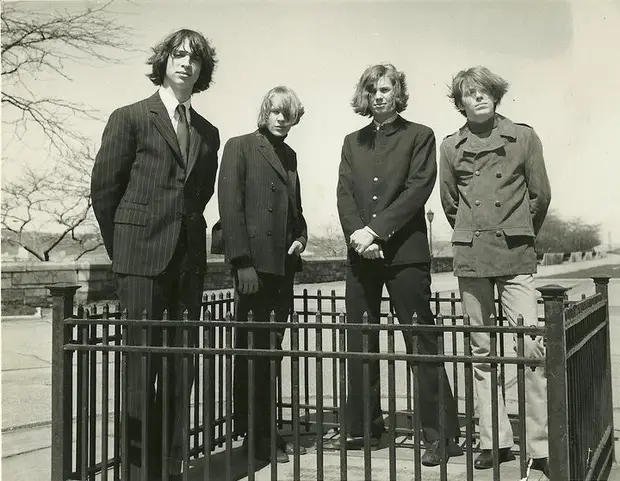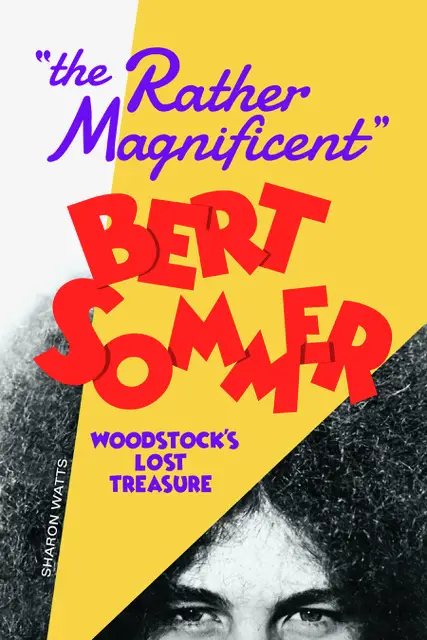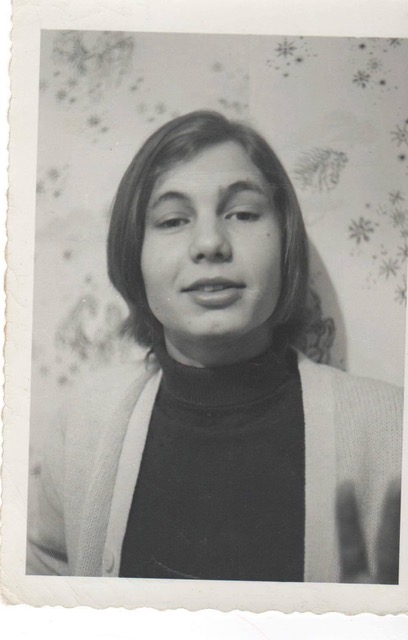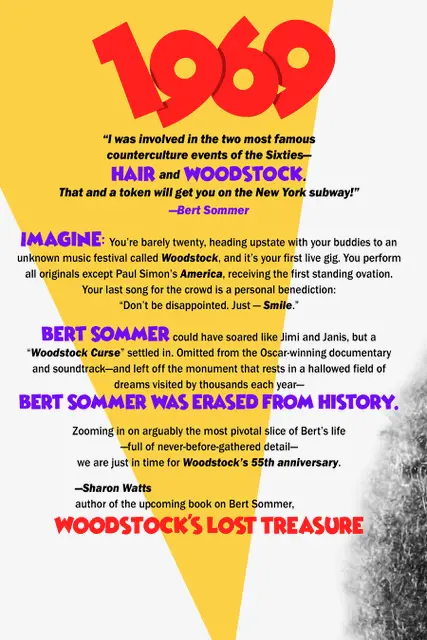In 1969, Bert Sommer, an American folk singer and songwriter, was immersed in a moment when peace, love, and hippies flowed through Bethel, N.Y., at a three-day-event known as Woodstock.
Performing music had been Sommer’s passion since a teenager. Riding the wave of Beatlemania, Sommer took a train from Hartsdale and went to Central Park in Manhattan where he met semi-truant and aspiring musicians, Leslie West, Larry (Weinstein) West, Peter Sabatino, Roger Mansour, and Jerry Storch. Together, the boys formed the garage band, The Vagrants.

Although Sommer was not a performing member of The Vagrants, he penned a dozen songs and more for them, including “And When It’s Over”, featured on the band’s first LP. The Vagrants performed gigs in the Long Island club, The Action House.
Simultaneously, in Washington Square Park, Sommer met two more musical semi-truants, Tom Finn and Tom Feher who formed the classically-influenced “Baroque Pop” band, The Left Banke. Sommer formed a writing partnership with the band’s youngest member, Michael Brown, and wrote songs for The Left Banke.
Internal artistic disagreements amongst band members caused The Left Banke to reform under Michael Brown. Joining Brown in The Left Banke included Sommer, Michael McKean and David Warren Schierhorst. The band recorded several songs, including Feher’s “Ivy, Ivy”, and Sommer’s “And Suddenly”. Although “And Suddenly” was rising up the music charts, the original members sued the new version of the band.
After his stint with The Vagrants and The Left Banke, Sommer went to Los Angeles, CA to perform in HAIR, first as a member of the Tribe before moving on to play the character of Neil “Woof” Donovan.
In January 1969, Sommer, on Capitol Records released his debut album, The Road to Travel, produced by music executive and Brooklyn native, Arthur Kornfield. Kornfield left Capitol Records to co-create the Woodstock Music and Arts Festival alongside Michael Lang. Kornfield then invited Sommer to perform at the opening of the festival on Friday, Aug. 15, 1969, where he sang the song, “Jennifer”. Sommer wrote “Jennifer” for his HAIR co-star, Jennifer Warnes, and he received the first standing ovation at Woodstock. Sommer performed a 10-song set at the festival.

After Woodstock, Sommer recorded three additional albums, had his single, “We’re All Playing in the Same Band” reach No. 48 on the Hot 100 Chart in September 1970, and while at SUNY Brockport in 1974, met Waterford resident and singer/songwriter, Johnny Rabb (real name: Gary Roberts), through friend Rob Landis. Together, the trio performed at clubs and cafes in and around Brockport for several years. The trio also went to Los Angeles to work on a Capitol LP produced by Ron Dante, who had just produced 13 Barry Manilow hits.
Eventually through Rabb’s encouragement, Sommer moved to Albany in August 1983 where he continued his music career until his death from a nearly life-long pattern of juggling addictive tendencies on July 23, 1990 at the age of 41. Musicians who knew Sommer within the music circuit would have their own intricate memories to share and tell to a super fan who became inspired to write about the late singer.
Entering Sharon Watts
Growing up in a suburb of Harrisburg, PA, the then 16-year-old teenager Sharon Watts barely had the Woodstock festival on her radar. Watts, who later became an illustrator and writer, lived in New York City for 30 years before moving upstate to Beacon where she currently resides.
In December 2017, Watts visited The Museum at Bethel Woods for the first time to learn more about the festival and its performers. She was inside the hallway of performers and read their information and realized at the time that she didn’t know half of them. After her museum trip, she returned home with a book that she took out from her local library with every performer, in order of appearance. With her iPad and her two cats, she sat on the sofa and began reading the book until she reached Sommer’s name.

“When I got to Bert, I was simply blown away. Something in his delivery reached into my core, and I needed to know who he was, and why had I never known of his existence,” Watts recalled. “There was not a lot of info on him on the internet, but I started going down rabbit holes and found people who knew him – starting with his Woodstock bandmate, Ira Stone and his wife, Maxine, who were onstage during their set.”
Watts was drawn to Sommer and felt that he really could have been a contender in the music world. Sommer was a mystery for her to solve, and she wanted to shine a light on a musician whom she called a “forgotten treasure”. Watts decided to do more research and tell his story through the assistance of his musical peers.
The origins of her research
Watts first wrote a personal essay that she shared on her writing website in 2018. In 2019, she pitched an article idea to the United Kingdom’s Shindig Magazine. The magazine’s editor asked Watts for a piece that coincidently timed with Woodstock’s 50th Anniversary. Her article, “Hair”, based on the play that Sommer starred in, also centered around the festival and living in the mid-1960s.
Through her continued research, she found Sommer’s time living in Albany “equally if not more fascinating.”
During the Covid lockdown, Watts continued to collect stories from Capital Region musicians who knew Sommer and had performed with him during the mid-’80s–90s.
Watts then made connections with several of Sommer’s band members and friends, including Rick Bedrosian, who provided her a personal photograph he took of Sommer and Rabb in the early ‘80s to use for her book.
Kevin McKrell’s wife, Carla, told Watts about Sommer, “Even if you only met him for 10 minutes, you (will) never forget him.”

The tales told by Johnny Rabb
Rabb recalled the moment when Watts first reached out to him about his friend.
“(Sommer), he’s an angel, a bad angel, but an angel. I spent years with him, I lived with him in the same college house in Brockport and at several other places over there,” Rabb said. “I lived with him in Los Angeles and it was pretty wild.”
Rabb met Sommer while attending college at SUNY Brockport near Rochester. They became friends and got into bands together.
Rabb, along with Rob Landis and Sommer went from jamming at the Brockport Crypt inside the basement of a church to New York City’s Schaefer Music Festival, the Capitol Record building in Hollywood, and The Troubadour on the Sunset Strip, Watts said.
A few months before Sommer moved to Los Angeles, music producer Artie Ripp encouraged him to audition for the role of Flatbrush, a character of the factitious rock band, Kaptain Kool and the Kongs, based on the children’s Saturday morning variety show, “The Krofft Supershow” in 1976. Sommer was only on the show for one season, and did not reprise his role for its second season. He also released his final album while living in Los Angeles, “Bert Sommer”. The album was ultimately unsuccessful and Sommer was dropped from Capitol Records.
Living the dream in Albany…
Rabb convinced Sommer to return to Albany where people would appreciate him. Once he left Los Angeles in July 1983, he hitched a ride from New York City to Albany with his friend and musician, Dave Durocher and his wife, Jeannie Durocher. Once Sommer was at Rabb’s house, Sommer knew he had found his “forever home” in the Capital Region.
While in Albany, he started performing at open mics until he met Kevin McKrell and his wife, Carla. They, along with Rabb and additional members Rick Bedrosian and Bill Pulchinski (formerly “Broadway Blotto” in the band Blotto) formed The Fabulous Newports. Sommer also performed with Kevin as “Irish Bert”. Once Sommer became friends with Rabb’s friend Eddie Angel, they formed The Poor Boys alongside Rabb, Bedrosian, and Buck Malen.
Sommer performed all around Albany, Schenectady, and Troy at clubs and venues like 288 (Lark Street), The Grinch, Dulan’s, Billy’s Pub, The Gemini Jazz Cafe, J.B. Scott’s, The Boat Slip, and later Quintessence, a retro diner in Albany where he sang and played the piano to restaurateurs.
“He had an amazing life – 41 years. He had an amazing life and he wouldn’t take credit for it because he screwed it up somehow when he didn’t get the money, but I think it’s survival,” Rabb said. “He was a survivor, and he took the wrong path with the drug thing, you know. That just killed what he had.”
Sommer was buried next to his father at Kensico Cemetery in Valhalla, near Westchester.
Rabb called Watts a master as a writer and a fan of Sommer. He provided Watts plenty of stories of his friend over the phone and provided her some personal photos to use for her book. He said reminiscing about his friend was very cool.
Sommer’s connection to Sarge Blotto (Greg Haymes)
During his time in Albany, Sommer met many area musicians and one of those notable friends was musician, artist, and journalist, Greg Haymes. Sara Ayers, Haymes’ widow, said that her husband might have met Sommer through Rabb.
Haymes hosted Sarge Blotto’s Hot Seat, an interview segment featured on George Guarino’s monthly local cable access show, Real George’s Back Room. In May 1985, Haymes featured Sommer on his talk show for a one-on-one interview.
The interview segment opened up with Sommer’s song, “Don’t Take Candy From Strangers” that he co-wrote with Eddie Angel. In the half-hour segment, Sommer would be seen showing off the program for the 1969 Los Angeles production of “Hair” which featured his own head and hair on the front cover, and his debut album, “The Road to Travel”. He even performed “We’re All in the Same Band” on the acoustic guitar for both Guarino and Haymes.
“What a guy. I love this guy,” Sommer said of Haymes.
Sommer recalled the moment he first met Haymes when he arrived in Albany. Aside from knowing Rabb, Haymes was one of his first Albany friends that he met in the local music scene.
“So I came to Albany and right away, I started working and the first guy I met in Albany was this man (of Haymes). This man is family.” Sommer said. “I came to town and he said, ‘I know who you are!’ and right away, he made me feel good.”
Sommer’s interview with Haymes can be watched on the Nippertown YouTube channel.
Ayers didn’t know Sommer well and by the time he was living in Albany, Ayers was working a day job and not hanging out in the clubs. She knew that her husband was friends with Bert and that he wanted to debut his interview series on Guarino’s show with him since he had “such a poignant story” and that he was “gregarious enough to be a fabulous interview.” she said.
In the interview, Haymes said that Sommer was born to be a star.
Sommer’s Legacy
Even though Watts never met Sommer in person, her collection of memories that she gathered from his friends and bandmates who still remember him with a big smile, made her feel like she knew him on a deeper level.
“The stories I’ve collected for my book are what give it any weight,” Watts said. “People’s memories and stories flesh out a man (in many ways still a kid), who had a mega talent, a golden glow, and some ‘demons’ clanking along his ankles. Had he not fallen through the cracks by not appearing in the Woodstock film or soundtrack (or any subsequent director’s cuts), Bert could have been as big a star as anyone.”
The Book
Watts titles her book, The Rather Magnificent Bert Sommer – Woodstock’s Lost Treasure. She calls her book about Sommer an “impressionistic portrait.” Although the stories told about him are nonfiction, she adds in a little creative leeway as she sometimes will write a scene that will help the reader in a “you are there” position, she said.
The book is more than likely going to be self published. Although she still has some loose ends to tie up in it, she wants to release the book in August 2025. Watts said that there is also a documentary that is taking seed, and her book will support the documentary on Sommer.
Watts also has released a limited issue Zine, also titled “The Rather Magnificent Bert Sommer – Woodstock’s Lost Treasure”. It was originally conceived for the 55th anniversary of Woodstock. The Zine includes a small section of a story that helps bring Bert’s Woodstock experience to life. To receive a copy of the Zine, contact Watts through her website while they remain available.
An online flip-book of the Zine is available now and is free to view online.
Future readers will be directed to obtain either a hard copy or E-book through her website, sharonwattswrites.com for brick-and-mortar and online purchase, as well as the Woodstock Museum at Bethel Woods gift shop.
The takeaway
“I am not trying to “sell” Bert, but to bring him into the spotlight, and into the archives of history where he deserves to be.” Watts said.
What is most heartening to Watts was that Sommer never gave up performing and he always remained upbeat in the face of many adversities.
“But the most interesting thing was that he was literally three degrees of separation of anything and anyone who was happening over the course of three decades.”
Watts wanted to write Sommer’s book now because she felt that it was time to do something to help draw people to his music, share his voice and monumental personality, and also, help recognize him and his contributions to Woodstock. Watts added that Sommer even has a following of new young fans in Europe who have grown to love his work and she finds that heartening.
“He deserves to be part of the Woodstock Monument and he deserves to be more than ‘Bert Who’? There were so many rumors floating around about what happened, why was he omitted from the Woodstock documentary and the soundtrack,” Watts said. “I tracked down every thread I could to solve the mystery as best it could be solved.”
She concluded, “This is partly about righting a wrong, getting Bert’s rightful place in the annals of Woodstock history.”


Comments are closed.